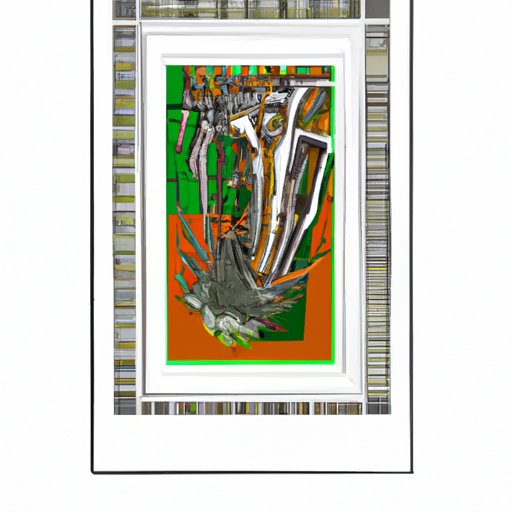Introduction
Printing art prints is an excellent way to showcase your creative work. Whether you’re a professional artist or a hobbyist, it’s important to choose the right printer and paper for your art prints in order to get the best results. In this article, we’ll explore the process of printing art prints, from researching the best printer and paper for your needs to understanding the various types of art prints and preparing your artwork for printing.

Research the Best Printer and Paper for Art Prints
The first step in printing art prints is to research the best printer and paper for your needs. It’s important to consider your budget when choosing a printer, as some printers can be quite expensive. Look for reviews and recommendations online to help you narrow down your choices. Once you’ve chosen a printer, check its specifications to make sure it will meet your needs. You should also compare the types of paper available and decide which one will work best for your project.

Understand the Different Types of Art Prints
Before you start printing your artwork, it’s important to understand the different types of art prints. Giclee prints are high-quality prints made with inkjet printers. Lithographs are prints created using a printing press and special inks. Block prints are hand-carved images printed onto paper. Serigraphs are screen-printed images that use a stencil to create the design. Each type of art print has its own unique characteristics, so it’s important to understand the differences before you start printing.
Decide on a File Format
When printing art prints, it’s important to decide on a file format. The most common file formats used for art prints are JPEG, PNG, and TIFF. JPEG files are best for photographs and detailed artwork, while PNG files are better for line drawings and text. TIFF files are suitable for high-resolution artwork and large prints. Make sure to choose the right file format for your artwork in order to get the best results.

Prepare Your Artwork for Printing
Once you’ve decided on a file format, it’s time to prepare your artwork for printing. Adjust the size and resolution of your artwork if necessary. Edit your artwork if necessary, and make sure to choose the correct color profile. If you’re printing a photograph, make sure to adjust the contrast and brightness to get the best results. If you’re printing a line drawing, make sure to use a vector graphics program such as Adobe Illustrator.
Follow the Printer’s Instructions for Printing Art Prints
Now that your artwork is ready to go, it’s time to follow the printer’s instructions for printing art prints. Read the user manual carefully and set up the printer correctly. Load the paper correctly and make sure the ink levels are adequate. Finally, print a test page before printing the final artwork to make sure everything is working properly.
Conclusion
Printing art prints is a great way to showcase your creative work. With the right printer and paper, you can create beautiful prints that will last for many years. By researching the best printer and paper, understanding the different types of art prints, preparing your artwork for printing, and following the printer’s instructions, you can create stunning art prints that you can be proud of.
(Note: Is this article not meeting your expectations? Do you have knowledge or insights to share? Unlock new opportunities and expand your reach by joining our authors team. Click Registration to join us and share your expertise with our readers.)
